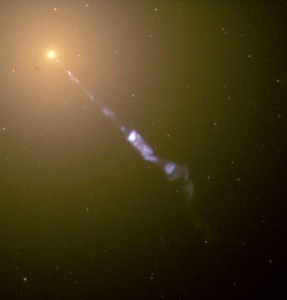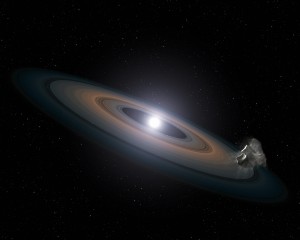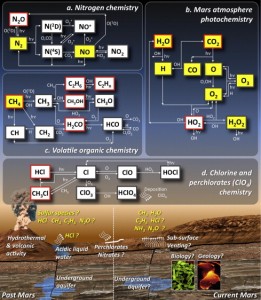
Hubble Space Telescope image of a 5000-light-year-long (1.5-kiloparsec-long) jet being ejected from the active nucleus of the active galaxy M87. From http://en.wikipedia.org/wiki/Active_galactic_nucleus.
Great talk today from Dr. Eileen Meyer of Space Telescope Science Institute (STScI) about gaseous jets launched from active galactic nuclei AGN.
These cosmic monsters emit a lot of matter and energy, sometimes in the form of jets (see picture at left) that can outshine the rest of the host galaxy. The jets can be observed to span vast distances, thousands of light years, larger than the host galaxies themselves, and mounting evidence suggests that the jets are powered by supermassive blackholes, living deep within the galaxy.
Meyer studies the evolution of these jets, and by following the motions of individual clouds of gas, she can tease out their velocity vectors, critical for understanding the amount of energy and momentum carried by the jets. In some cases, she’s found that the jets can brighten or fade over just a few years, some of the few astronomical objects that can be observed to change appreciably on human timescales.
Understanding the detailed properties of these jets is critical because they are so powerful they can shape the growth of galaxies and even in the evolution of the Universe itself over the largest spatial and temporal scales.

